Barb’s Salsa Macha, Mexico’s Pre-Hispanic Chile Oil
- October 2022
- By Barbara Engelskirchen
- Recipe from Mexico
-
- (2)
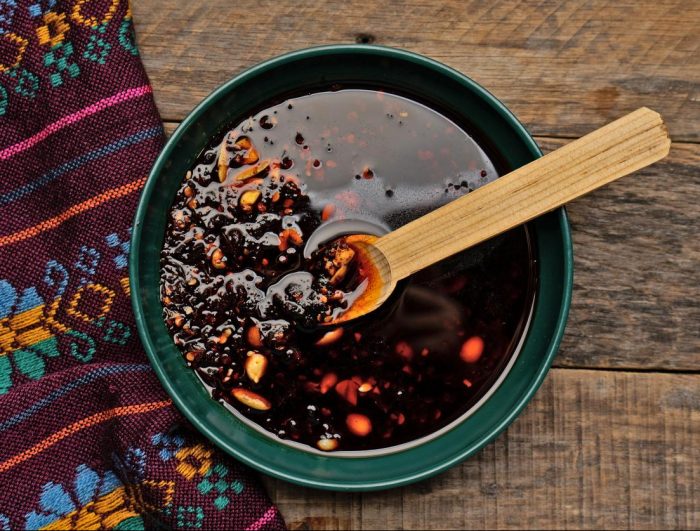
One spoonful of salsa macha was all it took. After her first taste of the thick, nutty condiment in Mexico more than 20 years ago, Barbara Engelskirchen set out to find a salsa macha recipe to call her own when she came home to the States.
Here’s how the macha meeting went down: “I was out with my cousins in Mexico City. We had a family dinner in a restaurant, and there was this salsa on a table,” says Barb, who is now chief development officer for the National Museum of Mexican Art in Chicago’s Pilsen neighborhood. She remembers staring at the condiment, which was dark, heavy, silty — nothing like the soft red and green salsas she was used to in Chicago. Plus, its color was spectacular: scorched ruby-black, with glints of chile, white seeds, and dried oregano.
”One taste and I thought, ‘Oh my gosh, this is really good. I need to make this. So, I did a lot of research—since my family didn’t make it, and I didn’t grow up making it,” says Barb. After lots of Googling, asking around, and cocina experimentation, Barb arrived at her signature take on this trending salsa that’s been compared to Asian chile oil. Today, more than two decades after that fateful taste in Mexico, Barb is family- and friend-famous for her salsa macha recipe.
”My partner Seaighán [pronounced “Sean”] loves it so much, I always try to have a batch on our kitchen counter,” says Barb. “We put it over everything. Seaighán eats it every morning with his eggs. It’s great with rotisserie chicken. It’s great with fish. We love to put it on top of humus.”
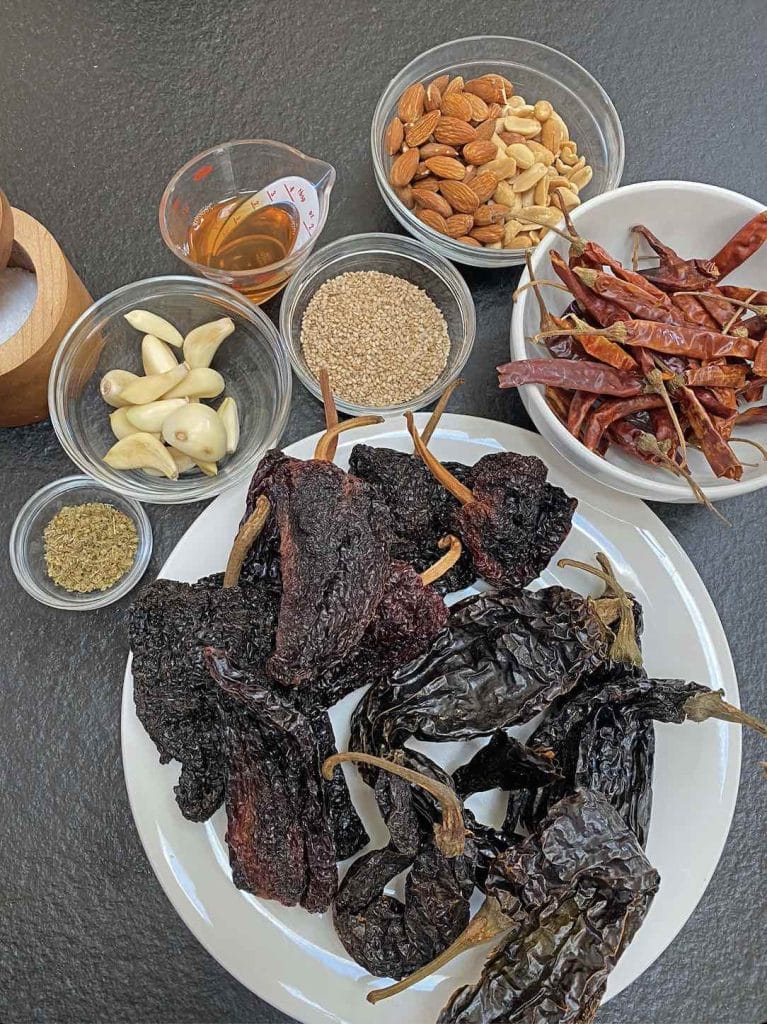
What Is Salsa Macha?
If you haven’t yet tried this oil-based Mexican sauce, here’s a quick primer. Salsa macha is made with ground chiles, seeds, nuts and oil. Barb uses olive oil, but some recipes call for vegetable. “Salsa macha has its roots in the Mexican states of Veracruz and Oaxaca, and though it isn’t strictly defined, it usually has dried chiles and garlic, fried and chopped and held in its own deeply infused cooking oil. Vinegar is optional. Nuts and seeds are, too, but they often appear toasted and crushed, particularly sesame seeds and peanuts,” said the New York Times in December 2020, anointing it “The Most Valuable Condiment of 2020: Salsa Macha.”
The condiment has been growing in popularity, both in Mexico and the States. “Salsa macha is hot,” affirmed Texas Monthly in its “Salsa Macha Is Setting Texas on Fire,” published one month after the New York Times piece: “Within the last five years, this fiery, oil-based salsa has grown from an obscure condiment to an in-demand item at Texas taquerias and restaurants.”
Despite growing up in a home with two great Mexican cooks — her mother and abuela — Barb had never heard of salsa macha until she moved to Mexico City right after college. She was teaching English, following in the footsteps of her mom. ”My mother is the reason why I am connected to the Mexican part of my heritage. She worked as a bilingual teacher in Little Village, a principal in Humboldt Park, and a superintendent on the South Side. She became a bilingual teacher in the ’70s when there wasn’t a lot of materials and curriculum for kids to learn about their heritage. And she had to create it all, which is why I have such a strong connection to that side of my background.”
Why does she think her family never made this traditional Mexican salsa? ”Probably because you really need a good high-speed blender,” says Barb. ”And my grandmother didn’t have that. Her grandparents came from Durango during the Mexican Revolution. She had a molcajete, and I can’t see her spending the time to make this salsa. Modern conveniences make it much, much easier.”
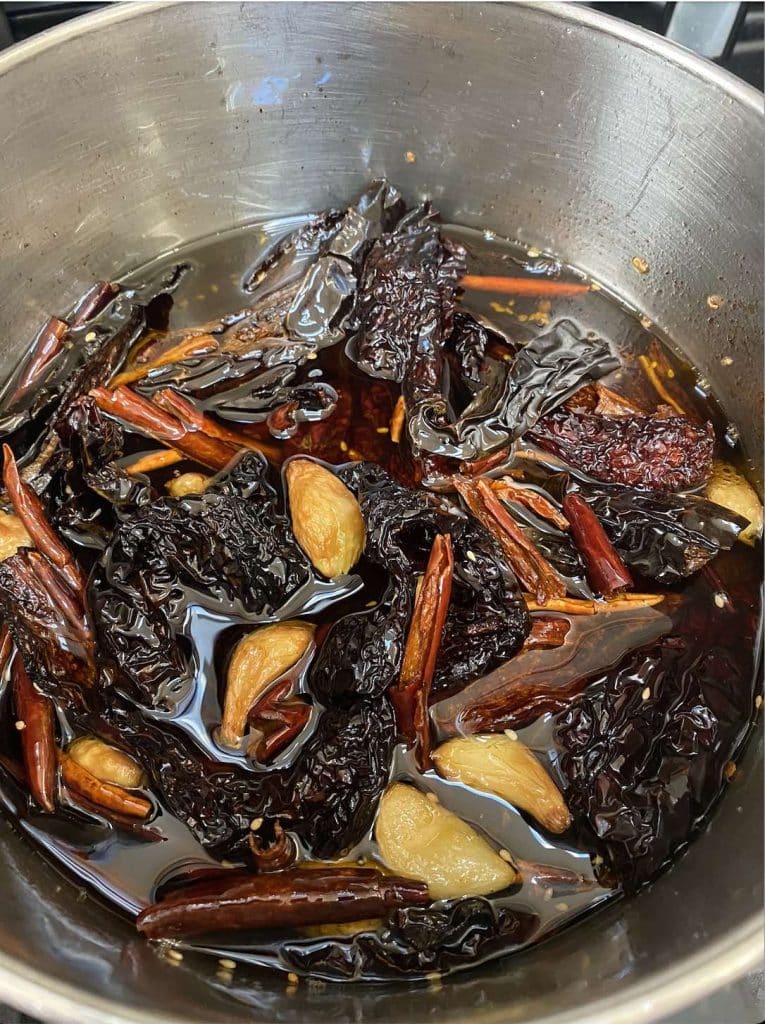
The Pre-Hispanic History of Salsa Macha
Turns out that hand-grinding in a molcajete is precisely how Mexico’s first salsa macha cooks made their ancient versions of this sauce. ”This salsa has its roots in Orizaba, a city in the Mexican state of Veracruz,” continues Texas Monthly. It has a ”paste-like consistency resembling that of Asian chile oil sauce. This isn’t as surprising a connection as you might initially think. For centuries after Mesoamerica’s conquest, Veracruz, founded by Spanish conquistador Hernán Cortés in 1519, was a major port of trade welcoming commodities from the East. No one knows for sure, but it’s possible both Asian chile oil and salsa macha were products of innovation spurred by cross-continental trade.”
Actually, salsa macha was likely prepared long before the conquistadores showed up. “Its true origin dates back to pre-Hispanic times, mainly in the region of Veracruz, Mexico,” writes Mexican Food Reddit contributor radioGunked. “The ancient Olmec, Totonac and Huastec settlers already made use of dried chiles molcajeteados and submerged in palm oil. Although originally they used dehydrated jalapeño—better known as morita pepper—and dried comapeño pepper, native to Veracruz.”
Another topic for speculation is how salsa macha got its name. Most explanations say the condiment tastes so fierce, it was called the feminine version of “macho.” But the more probable answer is that macha comes from the verb machacar—to chop into eensy pieces. This is a sauce that demands a ton of grinding. Imagine hand-crushing nuts, seeds and chiles to a super-fine consistency in the pre-blender days of molcajete, says Barbara. She shakes her head, thankful for her Vitamix.

How Barb Created Her Family-Famous Recipe
So how did Barb know this was the one: her salsa macha? ”I did a lot of research to what makes a good salsa macha, and found out that it’s a flexible recipe that has room for variations. All call for some type of chile, a nut, some garlic, oil and sesame seeds. There is no one recipe. So I took the ratio of chiles to nuts and played around with it,” she says.
Barbara landed on using three types of dried red chiles—ancho, pasilla and arbol. “It shouldn’t be too spicy,” she cautions. ”It has a little spice, but not so much that it overwhelms. It has a nice smoky flavor.” As to nuts, traditional salsa macha calls for peanuts, but Barbara likes to mix and match flavorful combos also including almonds and cashews. That’s the beauty of salsa macha: it’s so flexible, she says. ”If you have people in your family who have nut allergies, you can plan accordingly.”
To keep up with her partner’s devotion to the condiment and demand around the holidays, when she gives it away as gifts, Barb regularly makes huge batches of salsa macha—enough to fill rows and rows of glass jars. ”They then get stored in the fridge, where they last for months. The one that we are using always sits on the counter. It keeps safely because it has oil covering the chiles and all the ingredients,” she says. ”Plus, if you put it in the fridge, it will get too solid.” And she and Seaighán need their macha to be room temperature—always ready to drizzle onto, well, everything, Barb says. Make a batch and taste why for yourself. Just like Barb did decades ago in Mexico City, we predict you’ll fall in salsa macha love.
Ready to Make Barb’s Family-Famous Salsa Macha?
MoreLike This

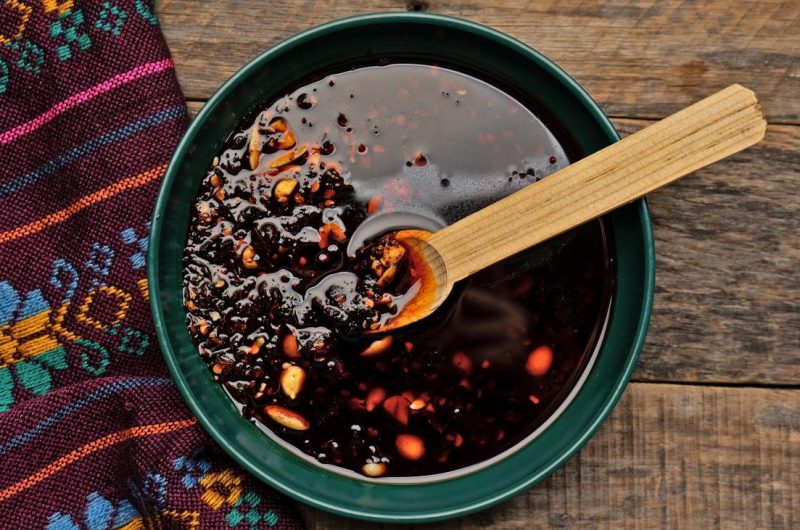

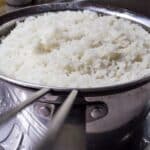
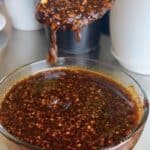


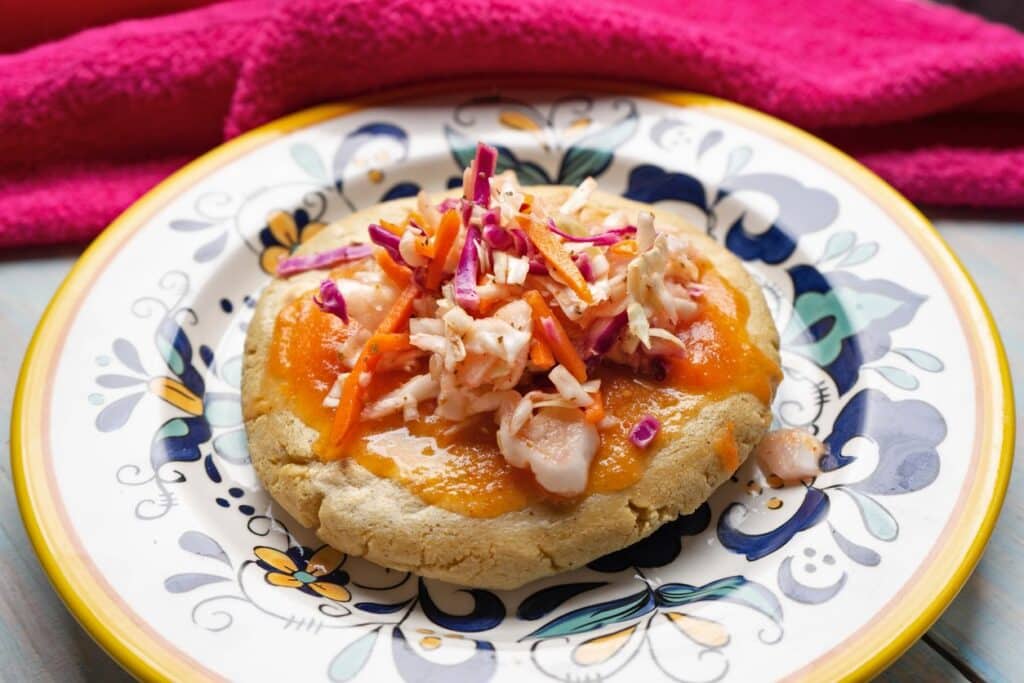
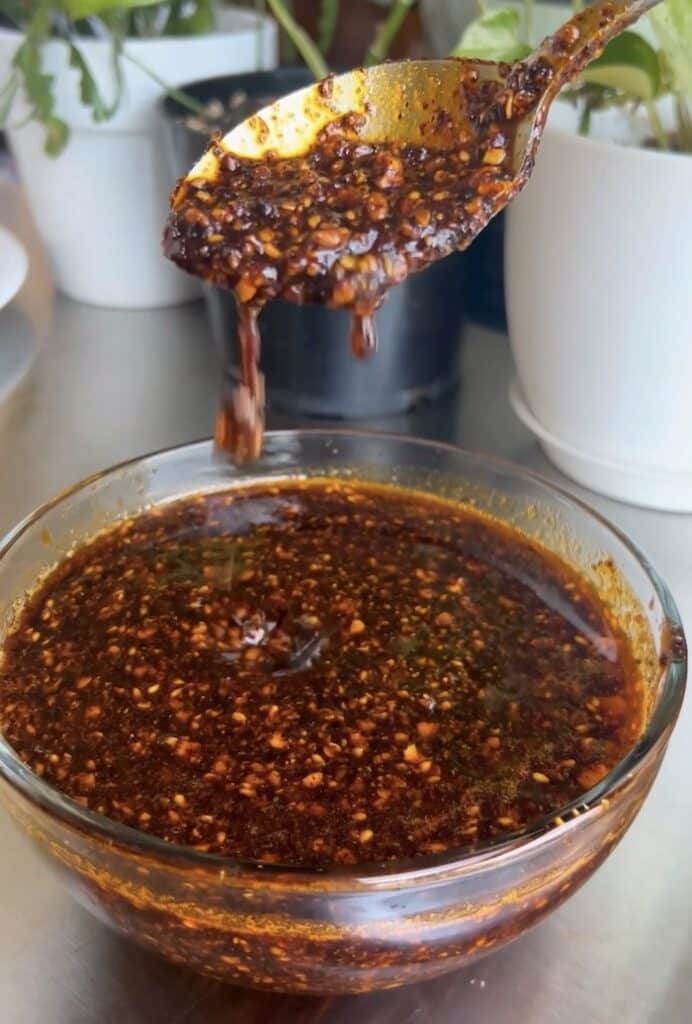
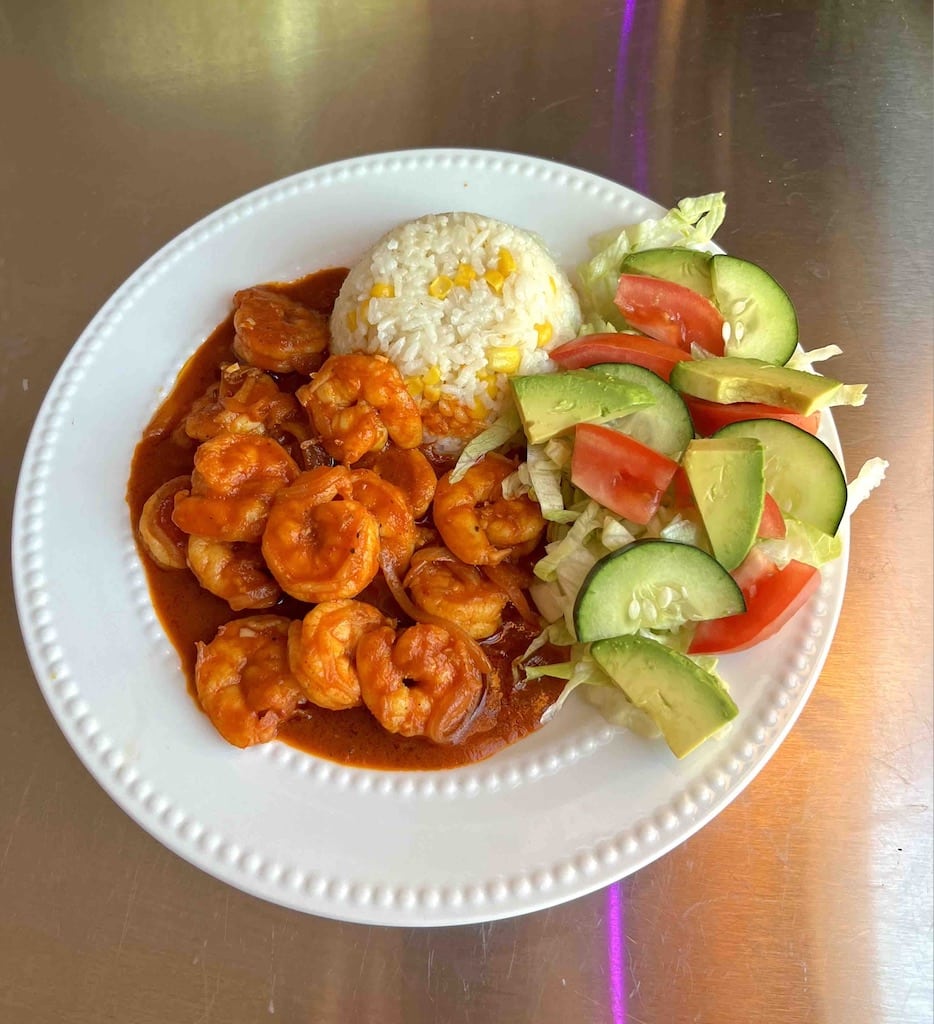
Got a question or suggestion?
Please rate this recipe and leave any tips, substitutions, or Qs you have!
Suggestions and questions from our readers
Excited to make this recipe this weekend. Looks incredible.